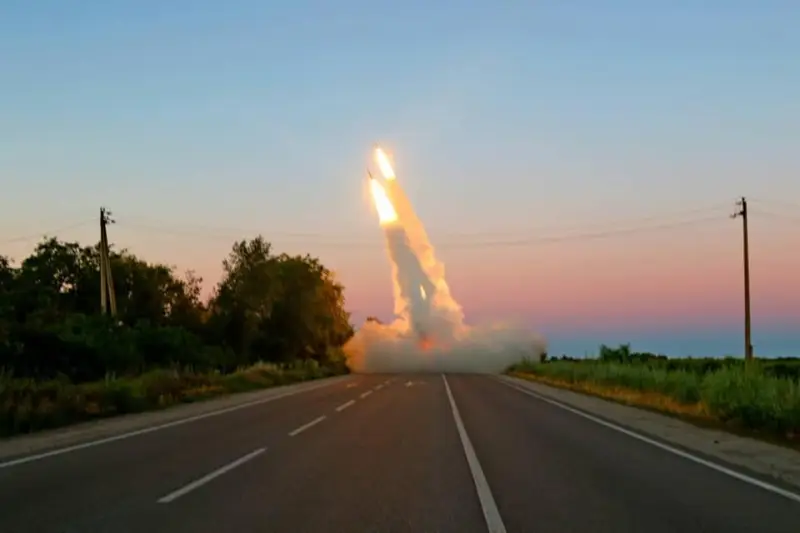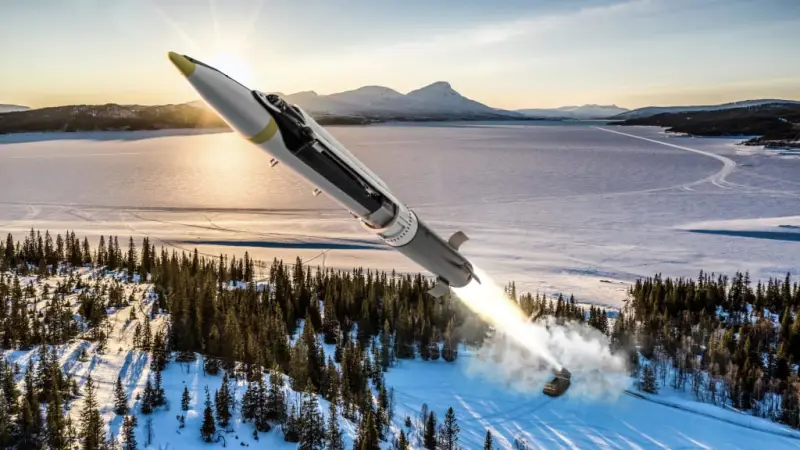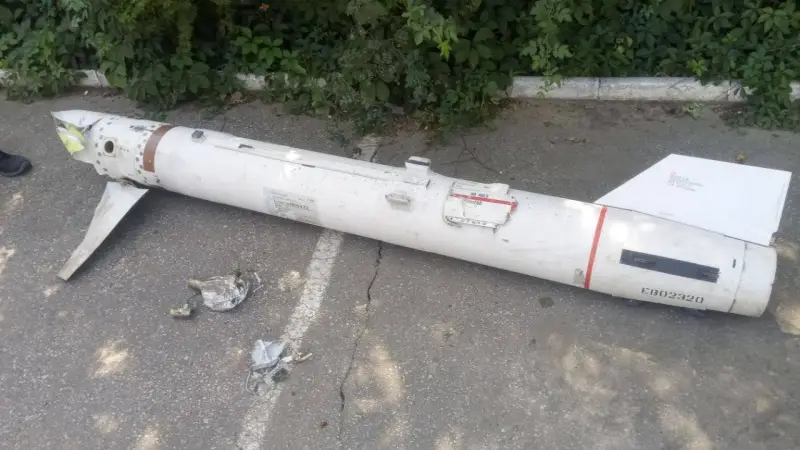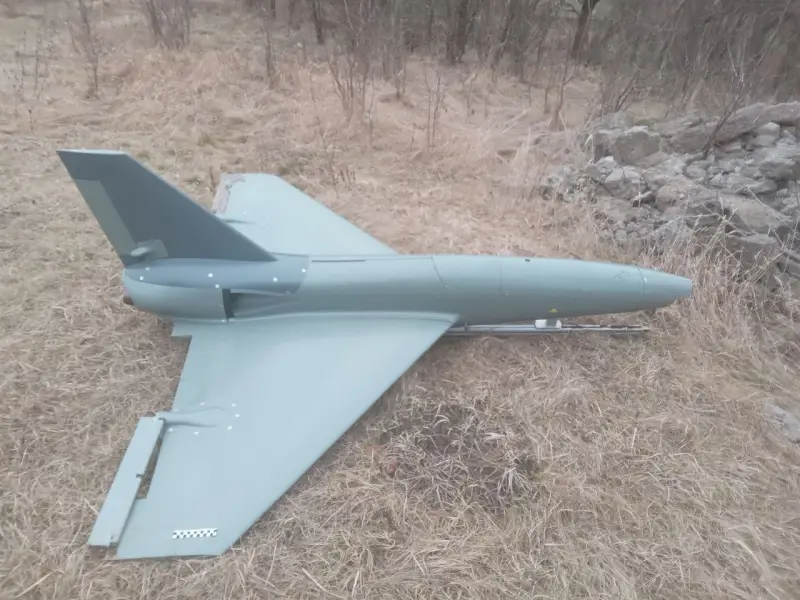“Sanitary zone” along the borders: Ukrainian threats and Russian responses

The M142 MLRS launches missiles. Photo of the Ministry of Defense of Ukraine
The main objectives of the current Special Operation in Ukraine are the demilitarization of the Kyiv regime and getting rid of the military threat from it. To achieve this, the Russian armed forces constantly and systematically destroy equipment and weapon enemy formations, and also strike rear targets. In the future, another way to protect against threats from the Ukrainian direction could be the creation of a “sanitary zone” of sufficient depth, which will ensure the security of our borders.
Stopping threats
To date, the Russian army has successfully destroyed the bulk of the Ukrainian military and military-industrial potential. The enemy's ability to resist and develop independently has sharply decreased. However, at the beginning of 2022, foreign partners, patrons and owners announced their intention to support the Kiev regime in various ways and largely fulfilled this promise.
The main direction of assistance was the supply of various weapons and military equipment. In particular, starting from the summer of 2022, the transfer of long-range missiles and aviation weapons. In accordance with their cannibalistic customs, the enemy began to use them, incl. for civilian objects and populated areas. Our military is learning quite quickly to deal with such threats, but it is not possible to completely eliminate all risks.
In the current situation, the tasks of the Russian armed forces remain the same. They must knock out the military potential of the Kyiv regime and destroy its armed formations. It is also necessary to continue the liberation of temporarily occupied parts of new regions. In addition, plans for the future and strategies for protecting the liberated areas should be made now.
For some time now, the possibility of creating a security zone along our new borders has been mentioned at various levels. This concept provides for the liberation of certain territories from the enemy’s strike weapons and military potential. It is also necessary to create a system of control and, possibly, prevention of their new militarization, incl. by force.

The GLSDB product in the first seconds of flight. Boeing graphics
The topic of the “sanitary zone” is raised at various levels. For example, on March 18, President Vladimir Putin recalled this idea. During a press conference at the end of the elections, he indicated that in the future - when such a need arises - a demilitarized security zone could be created in the current territories of the enemy. The depth of such a zone has not yet been determined, but its configuration should take into account existing threats in the form of strike systems, primarily foreign-made.
The solution
Thus, the Russian leadership does not exclude the possibility of creating a “sanitary zone”, but for now considers it only as one of the options for further actions in solving the main strategic tasks. It cannot be ruled out that such a plan is already being worked out, and relevant organizations and departments are looking for solutions to both basic and additional issues in this context.
First of all, the principles of organizing the demilitarized zone are in question. It may appear as a result of some kind of agreement with the Kyiv regime, existing or future, or with its foreign masters. Such an agreement should define the boundaries of the security zone on Ukrainian territory, as well as a list of assets and forces that are allowed to be kept in it. Sanctions should also be defined in case of violations by the Kyiv regime.
This scenario looks interesting and promising, but its implementation is unlikely. The fact is that it requires the active participation of the enemy and his allies. In the current situation, Kyiv, Washington and other foreign capitals are unlikely to take such measures, at least because of reputational costs.
In the absence of understanding from “foreign partners,” a security zone can be created by our army unilaterally. Within the specified areas, constant surveillance and reconnaissance can be organized with the suppression of any military preparations. The enemy's deployed forces and weapons will be suppressed and destroyed.

Downed AGM-88 air-to-surface missile. Photo Telegram / "Military informant"
Such events will not fundamentally differ from the current Special Operation on Demilitarization, and in essence will become its direct continuation. At the same time, it cannot be ruled out that all actions will be limited only to the “sanitary zone”. In order to prevent violations and provocations, it is also possible to use force on rear targets, through which the enemy will try to militarize the security zone.
Security zone
The dimensions, configuration and other parameters of the hypothetical demilitarized zone have not yet been determined. However, the Russian leadership has already made hints in this regard. Thus, the president recently stated that this zone will be located on the territory of a neighboring state, and its depth depends on the weapons available to the enemy. In this regard, it is necessary to consider the strike systems available to the Kyiv regime, as well as methods of protection against them.
The longest-range ground fire weapons of Ukrainian formations are the M270 MLRS and M142 HIMARS MLRS with GLSDB ammunition. The latter is a GBU-39/B SDB guided bomb with a rocket engine for launch from a ground installation. The maximum flight range of such a product reaches 150 km. Standard ammunition for the M270 and M142 from the GMLRS family only flies 90 km.
Last year, the United States transferred to Ukraine a number of ATACMS ballistic missiles of one of the early modifications. In terms of firing range, this weapon does not exceed the GLSDB, but compares favorably with its combat load. Recently there were reports about the possibility of shipping more advanced tactical missiles of the same line with a range of up to 300 km. It is unclear whether it will be possible to install them.
Almost a year ago, the Kiev regime received British Storm Shadow air-launched cruise missiles of British production and unified French SCALP-EG. The maximum flight range of these products is 550 km. At the same time, current international agreements allow missiles for export to fly only 300 km. In addition, disputes continue in Germany about the possibility of supplying similar ALCMs TAURUS KEPD 350 to Ukraine. Their rated range exceeds 500 km, but the same export restrictions apply.

French SCALP-EG missile under the wing of a Ukrainian Su-24. Photo: Telegarm/BMPD
In the case of air-launched missiles, it should be taken into account that their combat radius is determined not only by their own characteristics, but also by the flight data of the carrier aircraft. As carriers of Storm Shadow and Scalp, the Ukrainian Air Force uses Su-24 bombers with a combat radius (at normal load) of 500-550 km.
The enemy is also trying to use disposable attack UAVs. There are a number of types of such equipment, and the most advanced ones have a declared flight range of up to 800-1000 km.
Thus, to protect Ukrainian forces from current weapons, a security zone with a depth of 150-300 km is required. For comparison, within a radius of 300 km from Belgorod are Dnepropetrovsk (Ukrainian Dnepr) and Kremenchug, and Kharkov and Poltava fall into a similar “sanitary zone” around Donetsk. The 300-km zone, measured from the borders of Crimea, covers Odessa, Kirovograd (Ukrainian Kropyvnytskyi), Krivoy Rog, etc.
A security zone for protection against ground strikes, drawn from the current borders and front line, will block a significant part of Ukrainian territory. With the liberation of new Russian regions, it will move westward with an understandable result.
In this case, we are talking only about protection against surface-to-surface missiles. Enemy attempts to use existing ALCMs will expose airfields within a radius of up to 1000 km from the contact line to attack. Almost all Ukrainian airfields will become targets for demilitarization. Potential UAV launch sites require similar attention.

British-made Banshee Jet 80+ attack UAV. Photo Telegram / D.V. Pushilin
Defense and prevention
Thus, the main threat to border areas, incl. new regions, represent various means of air attack, aviation and ground. At the same time, our armed forces, represented by air defense crews, have shown the ability to combat such threats and deliver retaliatory strikes. Obviously, the experience of current military operations will be useful in the future to ensure a security zone.
Current types of radars have confirmed their ability to detect all expected air targets, from aircraft to missiles. SAMs and air defense missile systems, in turn, constantly demonstrate the ability to shoot down such objects, including complex targets. The placement of modern air defense systems along the border of the “sanitary zone” will make it possible to get rid of threats in a timely manner, incl. over enemy territory.
At the same time, a reconnaissance system and strike systems are required to thwart enemy attempts to return forces and assets to the demilitarized zone. Similar tasks are also being successfully solved at present and contribute to the ongoing demilitarization of Ukraine. Detected activity can be suppressed using various missiles and other land, air or sea-based weapons.
Possible scenarios
Despite the active and diverse support of foreign partners, the military potential of the Kyiv regime is constantly declining. His defeat is already obvious, and the timing of such an outcome is determined only by the actions and plans of the Russian side. In this regard, it is now possible to work out scenarios for future developments aimed at ensuring the security of our borders.
One such scenario involves the creation of a security zone along the border in which Ukraine will not be able to conduct any military construction or preparations. Reportedly, the Russian leadership is still only studying this issue, but does not exclude the possibility of a positive decision and the subsequent organization of a “sanitary zone”. Moreover, even now, before decisions are made, it is clear that our army will be able to cope with such tasks and cover a strategically important area. Whether this opportunity will be used, time will tell.
Information